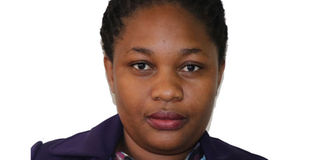Why Uganda is struggling to attain middle-income status

What you need to know:
Demographic dividend. Attaining middle income status will require initiatives that help the country to take advantage of the ‘Demographic Dividend’.
In response to the aspirations of Uganda Vision 2040 of transforming Uganda from a peasant to a modern and prosperous economy by 2040, the second National Development Plan (NDPII) 2015/16-2019/20 was developed. The NDPII was developed with the goal of driving the country towards a lower middle income status by 2020, progressing to an upper middle income status by 2032 and attaining the target of $9,500 percapita in 2040.
The plan is intended to achieve this target through strengthening the country’s competitiveness for sustainable wealth creation, employment and inclusive growth, a private sector-led; export-oriented; quasi-market approach, as well as, industrialisation, fast tracking infrastructure and skills development strategies in order to achieve the objectives and targets for the five-year period. According to World Bank, a lower middle income economy is defined as one with income per capita between $1,006 (Shs3.7m) and $3955 (Shs14.8m). Therefore, the NPDII aimed at achieving an annual per capita income of $1,039. To attain this, total GDP would have to grow by 12 per cent each year until 2020.
However, just one year to the end of the NDPII period, Uganda’s current per capita income stands at only $800 with an average growth rate of 5.3 per cent for the first four years of the plan (UBOS, 2018). By the look of things, Uganda will most likely not be able to meet its NDPII target of lower middle income status by 2020. GDP per capita has not grown as expected partly due to a fast growing population at a rate of 3 per cent per annum. According to the State of Uganda Population report 2019, more than half of the population is younger than the age of 15. This has translated into high dependence ratio, which places significant pressure on families, which must spend scarce resources on their children’s health, food and education rather than investment in profitable ventures that would increase the country’s GDP growth rate and per capita income. This puts the country at risk of not being able to achieve the plan’s targets by 2020. This has been a major hindrance mainly because the country has failed to tap the demographic dividend through provision of decent work.
Secondly, majority of the working people are in vulnerable employment. Vulnerable employment is often characterised by inadequate earnings, low productivity and difficult conditions of work that undermine worker’s fundamental rights. UBOS (2017) estimated that 54.3 per cent of the working population are self-employed with 6.9 per cent as contributing family workers. With more than half (61 per cent) of the persons in employment classified as in vulnerable employment in Uganda (UNHS 2016/17), it implies that majority of Ugandans earn less than what is required to meet their expenses and make investments that are necessary to increase the country’s GDP growth rate and consequently increase GDP per capita to $1,039 for the country to leap-frog to a lower middle income status by 2020.
Attaining middle income status will require initiatives that help the country to take advantage of the ‘Demographic Dividend’. This requires an increased investment in the social sectors such as education and health accompanied by social protection initiatives for the vulnerable groups through increased and widened access to social security, increased access to child-oriented services - health, education and social support.
This will reduce the dependence burden on parents allowing them to invest in profitable ventures. In addition it will also trigger human capital development and allow broader development of skills and improvement of labour outcomes and consequently contribute to inclusive growth and attainment of middle income status.
Ms Atwine is a research associate at the Economic Policy Research Centre.


